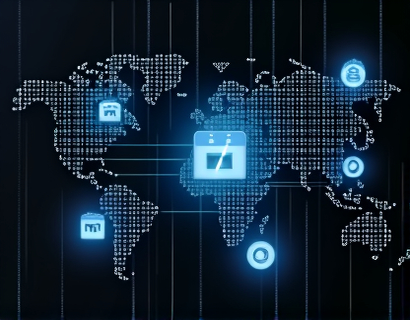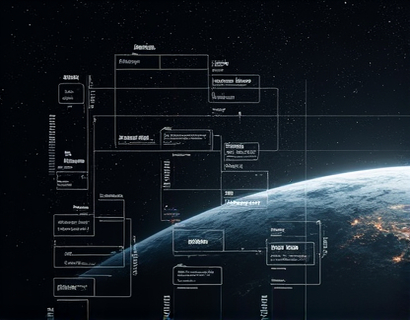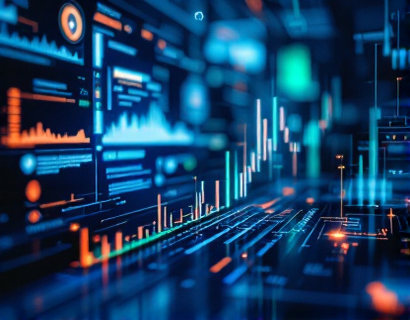Agricultural Software: Revolutionizing Farming Efficiency with Tailored Tech Solutions
In the rapidly evolving landscape of agriculture, the integration of advanced software solutions has emerged as a pivotal factor in enhancing farming efficiency and productivity. These technological advancements are not merely tools but transformative forces that are redefining the way agricultural operations are managed. By leveraging sophisticated software, farming professionals and industry experts can streamline processes, optimize resource utilization, and make informed strategic decisions, ultimately leading to significant growth and competitiveness in the market.
The Role of Agricultural Software in Modern Farming
Agricultural software encompasses a broad range of applications designed to address specific challenges faced by farmers and agricultural businesses. These solutions are tailored to meet the unique needs of the farming sector, from precision agriculture and crop management to supply chain optimization and financial planning. The primary goal of these software solutions is to provide actionable insights and automate repetitive tasks, allowing farmers to focus on core activities that drive productivity and profitability.
Precision Agriculture: Enhancing Crop Yields and Resource Efficiency
Precision agriculture, also known as precision farming, is a key area where software plays a crucial role. This approach utilizes data from various sources, including satellite imagery, drones, and soil sensors, to monitor and manage crops with unprecedented accuracy. Software solutions analyze this data to provide detailed insights into soil health, moisture levels, and plant growth, enabling farmers to make precise adjustments to their farming practices. For instance, variable rate technology (VRT) allows for the precise application of fertilizers and pesticides based on real-time data, reducing waste and environmental impact while maximizing crop yields.
One of the most significant benefits of precision agriculture is its ability to optimize resource use. By identifying areas of the field that require more or less attention, farmers can reduce the consumption of water, fertilizers, and other inputs. This not only lowers costs but also contributes to sustainable farming practices. Software platforms like FarmLogs and Granular offer comprehensive tools for managing these processes, providing farmers with a clear view of their operations and helping them make data-driven decisions.
Crop Management and Monitoring
Effective crop management is essential for ensuring high yields and quality produce. Agricultural software solutions provide tools for monitoring crop health, tracking growth stages, and predicting potential issues. For example, remote sensing technology, combined with machine learning algorithms, can detect early signs of disease or pest infestations, allowing for timely intervention. This proactive approach minimizes crop losses and ensures that farmers can respond quickly to changing conditions.
Additionally, software platforms often include features for managing irrigation systems, scheduling tasks, and tracking inventory. These functionalities help farmers maintain optimal growing conditions and ensure that resources are used efficiently. The ability to monitor and control these aspects remotely through mobile apps or web interfaces adds to the convenience and flexibility of modern farming operations.
Supply Chain Optimization
Beyond the farm, agricultural software plays a vital role in optimizing the supply chain. From planting to harvest and distribution, every step of the process can be streamlined through advanced software solutions. These tools help in planning and coordinating logistics, managing inventory, and ensuring that products reach the market in optimal condition.
For instance, software can predict demand based on historical data and market trends, enabling farmers and distributors to adjust production and stock levels accordingly. This reduces the risk of overproduction or stockouts, which can be costly and inefficient. Platforms like FarmWise and AgriData provide comprehensive supply chain management solutions, integrating data from various stages to offer a holistic view of the entire process.
Financial Management and Decision-Making
Financial management is a critical component of successful farming operations. Agricultural software solutions offer robust tools for managing finances, from budgeting and cost tracking to revenue forecasting and tax planning. By centralizing financial data and providing real-time insights, these tools help farmers make informed decisions that can significantly impact their bottom line.
For example, software can analyze expenses related to inputs, labor, and equipment, highlighting areas where costs can be reduced without compromising productivity. Additionally, financial planning tools can help farmers prepare for future investments and navigate economic uncertainties. The ability to access accurate and up-to-date financial information empowers farmers to take strategic actions that enhance their business's resilience and profitability.
Data Management and Analytics
Data is the backbone of modern agriculture, and effective data management is crucial for leveraging its full potential. Agricultural software solutions provide robust data management systems that collect, store, and analyze vast amounts of information. These systems ensure that data is accurate, accessible, and secure, enabling farmers and agricultural professionals to derive meaningful insights.
Advanced analytics tools within these platforms can process complex data sets to identify trends, patterns, and correlations that might not be apparent through manual analysis. For instance, predictive analytics can forecast crop yields, market prices, and weather conditions, allowing farmers to plan accordingly. Machine learning algorithms can also improve over time, providing increasingly accurate predictions and recommendations.
Challenges and Considerations
While the benefits of agricultural software are clear, there are several challenges and considerations that farmers and agricultural businesses must address. One of the primary concerns is the initial cost of implementing these technologies. However, the long-term savings and increased efficiency often justify the investment. Additionally, the complexity of some software solutions can be a barrier, particularly for smaller operations with limited technical expertise. To overcome this, many software providers offer user-friendly interfaces, training programs, and customer support to ensure a smooth transition.
Another important consideration is data privacy and security. As agricultural operations become more digitized, the risk of data breaches and unauthorized access increases. Reputable software providers must prioritize security measures to protect sensitive information and maintain the trust of their users.
Future Trends in Agricultural Software
The future of agricultural software is promising, with ongoing advancements in technology poised to further revolutionize the farming industry. One of the most exciting developments is the integration of artificial intelligence (AI) and machine learning. These technologies can enhance decision-making processes by providing more accurate and personalized insights. For example, AI-powered chatbots can assist farmers with real-time advice on crop management, pest control, and weather-related issues.
Another trend is the increasing use of Internet of Things (IoT) devices in agriculture. IoT sensors can monitor a wide range of parameters, from soil moisture and temperature to livestock health, providing continuous data streams that can be analyzed and acted upon. This level of connectivity and automation can lead to even greater efficiency and productivity in farming operations.
Furthermore, the development of blockchain technology holds potential for improving transparency and traceability in the agricultural supply chain. By recording transactions on a decentralized ledger, blockchain can ensure that every step of the process is verifiable and tamper-proof, enhancing trust and accountability among stakeholders.
Conclusion
The integration of advanced software solutions in agriculture is transforming the industry, offering unprecedented opportunities for efficiency, productivity, and growth. By embracing these technologies, farming professionals and agricultural businesses can stay ahead of the curve, adapt to changing market conditions, and achieve sustainable success. As the agricultural sector continues to evolve, the role of software will only become more critical, driving innovation and shaping the future of farming.










































